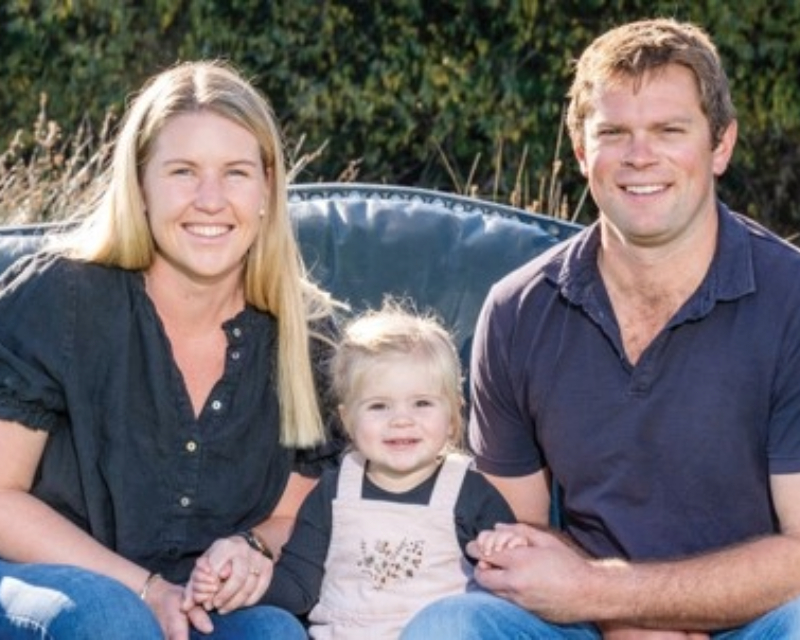Funding helps protect and enhance Southland biodiversity

Trent Robertson is putting his own environmental learning into action to help protect and enhance a northern Southland farm.
At Stuart and Angela Holden’s Ridgefield Farm, Trent, their daughter’s partner, is driving the project to help further protect an 8ha QEII Covenanted block featuring some very special kowhai – estimated to be about 200 years old.
“The kowhai trees are just cool, they grow all tied in knots, and every time I take someone up there, they’re in awe,” Trent says.
The 1500ha sheep and beef farm is located at Longridge North near Lumsden, where they are using an Environmental Enhancement Fund (EEF) grant for fencing, planting, and pest control.
An on-farm nursery is full of locally sourced seedlings, including kowhai, beech, ribbonwood, and tussock, propagated in shade houses.
Kowhai are very slow-growing, but the ribbonwoods are taking off, Trent says.
“Over the summer it’s every day watering and hours of repotting and weeding, just looking after those trees, because that’s the key to the whole thing working.”
Trent has a Bachelor of Environmental Education from SIT, and loves putting his learning into action.
This summer they will be planting ribbonwoods and manuka to complement the grasses, toitoi, and flaxes already in the ground.
It’s the third year of a long-term project to fence regenerating gullies and wetlands and plant about 2500 natives.
The property also includes grey scrub and native broom gully areas that are being protected, and tussocks that risk being outcompeted by pest plants.
The project also involves pest plant control of broom and Darwin’s barberry, and pest animal control targeting deer, pigs, possums, mustelids, and rodents over 520ha.
“We’ve got a real bad Darwin’s barberry. That’s a real future problem for New Zealand,” Trent says.
Possum numbers are low because of ongoing Possum Control Area work.
Trapping of stoats, ferrets, and feral cats has been very successful to date, he says.
Trent says the EEF has been really helpful in giving the project momentum.
“This is where the funding just comes in so handy, it’s really progressed the project, especially the nursery and help buying the traps.”
They are also using bio-controls to attack pest plants, including a Darwin’s barberry weevil and a Broom mite.
An ecological survey of the farm identified kowhai, ribbonwood, and totara as key native species.
“It’s a neat farm,” Trent says.

At Bare Hill Farm, Nick and Alexis Wadworth are undertaking the first stages of management and protection of about 300ha of regenerating mixed indigenous forest, including kowhai, in a valley running through the centre of their Otapiri Gorge farm.
The 2000ha sheep and beef farm has been in the family for several generations, with Nick and Alexis taking up the reins in the past few years.
They are carrying out large scale pest control of deer and pigs and are currently doing some research alongside their Makarewa Headwaters Catchment Group into the impacts of these browsers on the economy and environment.
"The wild deer and pigs not only have a big impact on us financially through loss of crop and pasture damage, but are causing evident degradation to the native bush and waterways on the farm and surrounding areas.”
Nick and Alexis are balancing having a new farm strategy with longer-term protection and their economic viability.
They have an active farm recycling policy, which aims to recycle as much waste as possible and not bury anything that doesn't naturally decompose, and some regenerative practices in the pasture areas as they develop more sustainable farming practices.
“The EEF is going to be an excellent resource to support our long-term strategy of protecting and enhancing the native bush we are so fortunate to have at Bare Hill," Alexis says.
Environment Southland team leader biodiversity Polly Bulling says 46 projects with a total project value of $1.7m will attract grants totalling $530,000 this financial year.
“We need to acknowledge Jobs For Nature - Mahi mō te Taiao, and because of that we were able to fund all eligible applications to some level.”
The focus of EEF is on protecting and improving what we already have, rather than creating new areas like new wetlands or riparian buffers.
People put countless hours into projects and Southland’s environment is reaping the rewards.
“The great thing is that the people getting involved are from all over Southland. There is a snowball effect with one landowner doing a project, and neighbours and other people then getting interested in doing their own projects. The fund is empowering people and community groups to turn their ideas into action," Polly says. “We’re starting to see the community coming together to work on projects.”
Polly is encouraging people to talk to the biodiversity team as early as possible, even if they only have the beginnings of an idea for a project.
Back at Ridgefield Farm, Trent says there has been a noticeable upturn in numbers of native birds around the farm.
“There’s now 10 tūī at the tui feeder, and the kererū are coming back, which is really cool.”


